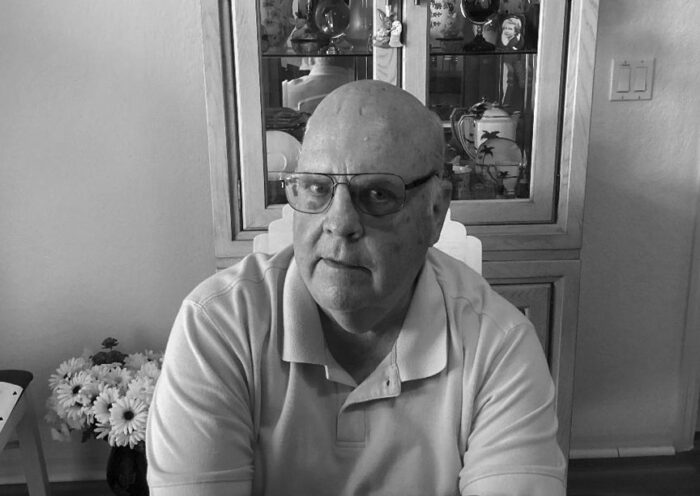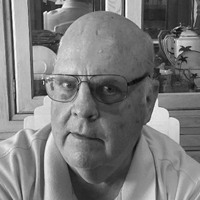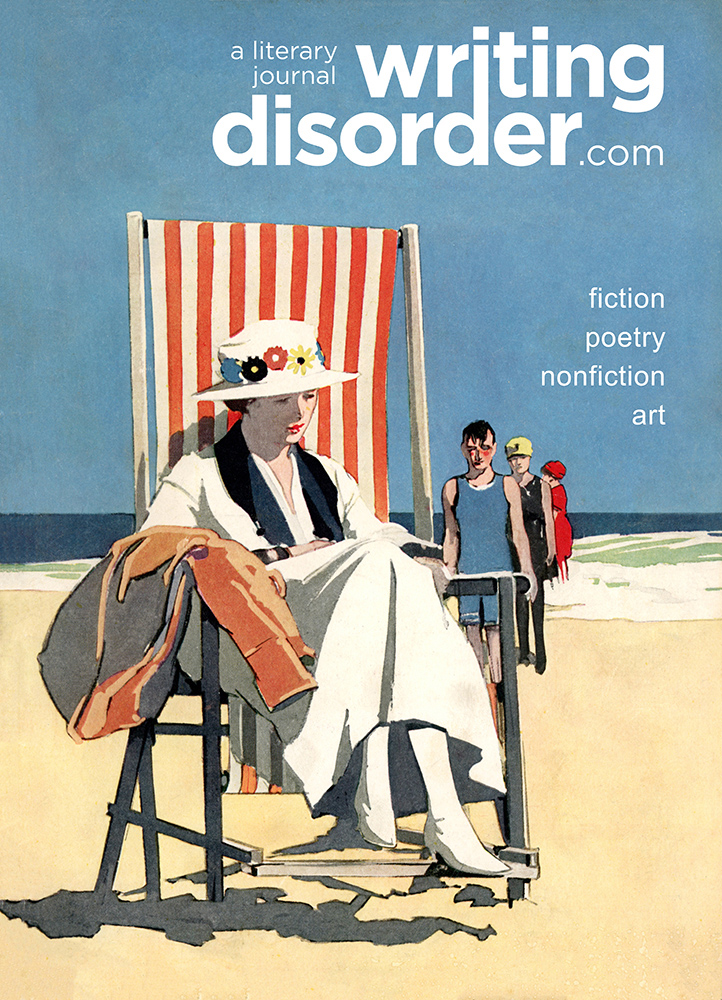Deconstructing Gertrude Stein
by Stephen D. Abney
“A rose is a rose is a rose.” In this paper, we explore the intricacies of this oft-quoted statement by Gertrude Stein through a discursive textual analysis[1],[2] of each word in serie, in an attempt to definitize the meaning of each,[3] while realizing its connectivity to metaethics.[4] Having set the paradigmatic table, as it were, we begin.
A: In American education, A refers to the top grade in an ABCDE or ABCDF grading rubric. In some school districts and colleges, A can be modified to A+ or A-, with A+ then becoming the highest possible grade.
However, use of A to signify the highest or best is not universal in the United States. Consider these counterexamples: In minor league baseball, the A leagues fall below the AA and AAA leagues. In high school athletics, schools are often classified by size for competitive purposes, so that a high school with 50 students does not compete against one with 5,000; this is particularly true for football, although state athletic associations frequently use a classification for other interscholastic sports as well.[5]
Similarly, in financial markets, A represents the sixth highest credit rating for a bond in the Standard and Poor’s grading system. AAA, AA+, AA, AA- and A+ bonds are all better than A bonds.[6]
While this level of detail is not required to parse Gertrude Stein’s intent, we can nonetheless safely conclude that “A” represents a grade[7] of some sort. Which classification system she was referencing is a detail to be examined later.
Rosé[8]: A wine with a pinkish color, between that of a red wine and a white wine. This coloration occurs as a result of the red grape skins coming in contact with the juice less than is the case for actual red wines. Few current wine classifications use letter designations. However, the St. Emilion Classification of 1955 notably held 1st 1e Grand Cru Classe A as its highest class, just above 2nd 1e Grand Cru Classe B. As Stein died in 1946, this particular rating schema could not have been her inspiration. Nevertheless, as Stein attended both Radcliffe and Johns Hopkins, and lived in France for many years, it is certainly conceivable that a precursor to the St. Emilion wine grading system is intended.
Is: The singular, first-person, present-tense form of the verb “to be.” Here, Stein cleverly uses one short word to convey several powerful concepts. First, she alludes to singularity, perhaps in the sense of uniqueness, but also, perhaps in the sense of unwedded bliss. Then, she reminds us that a personal experience is being portrayed. This is not a mass event, nor is it second-hand, a vicarious experience belonging to someone else and only shared with the author afterward.
Further, she does not write “a rose are,” which could be second person, or plural, or both. Rather, this is intimately first person. She claims reality for the rose. She also provides a time element. The rose is … now![9] The immediacy of her writing could not be clearer on this. Finally, Stein provides existential truth. “A rose is.” If she had stopped there, she would have pronounced a truth well worth remembrance. However, she continues, ever more deeply.
A: Singular, indefinite pronoun. Again, Stein emphasizes singularity. Note how easily she combines the singular “is” with the singular “a.” Now, however, she denies uniqueness. A unique, specific item would typically be denoted by “the,” not “a.” She has moved us swiftly from consideration of unity, to a discussion of universality. A rose stands for all roses in this sense. We see Plato’s cave shadows[10] in that any rose is an exemplar of all roses, a standard-bearer for rosedom, as it were. Stein clearly recognizes the inherent tension of living one’s self-interest while living in community, the same tension France experienced during her life there, as communism and capitalism struggled to win French hearts and minds.
Rose: A flower of the genus Rosa. A symbol of romantic love[11] since ancient times, the rose is perhaps the most purchased flower in the world. However, it is unlikely Stein is alluding to purchased love[12], whether via prostitution, dowry, bride price, or through the Western ritual of dating in which both wine and roses play prominent roles. She appears rather to refer us to the single rosebud, a potent symbol of chaste love, love that has not yet fully blossomed. Elsewhere, Stein wrote, “What is marriage, is marriage protection or religion, is marriage renunciation or abundance, is marriage a stepping-stone or an end. What is marriage.”
The Cherokee rose, Rosa laevigata, a symbol of the state of Georgia, is ironically an invasive species from China. The irony[13] of existentialism finds “full flower” in this selection of a cultivar named after people driven from Georgia by President Andrew Jackson and his minions[14] following passage of the Indian Removal Act of 1830[15] and originating in an area from which migrants to Georgia were excluded.[16] Stein uses this imagery to demonstrate historic solidarity with those oppressed peoples.
Is: In mathematics and logic, equal or proportionate. One plus one is two.[17] A is to B as B is to C.[18] One should not, however, reduce “a rose is a rose is a rose” to the tautological x = x = x, which would be to trivialize Stein’s profound insights. Further, she does not appear to intend comedic relief, as seen in “sometimes a cigar is just a cigar.”[19],[20] Egalité in the political sense seems to be intended here.[21]
If Stein is using rose in its symbolic sense to represent romantic love, then she clearly espouses marriage equality. In this, love is seen as a natural state, an innate human need to minimize suffering.[22] As Wilde may have said, “Any love is good love.”[23]
Arose: In Christian theology, the belief that Jesus resurrected from death.[24] Unlike the Phoenix story in Greek mythology, this renewal occurs once. As a singular event, “arose” completes Stein’s theme, initiated with “is” and “a”.
It is not surprising that deconstructionists from weird[25] societies, who have uncovered Christian symbology in works by authors as diverse as de Pisan, Faulkner, Achebe and Carle,[26] find a religious undertone in Stein’s seminal phrase. It would perhaps be more surprising had they not.
As depicted by Stein, the Christ story also contrasts with the Prometheus story in which the nightly rebirth only extends his punishment. If Stein were alluding to Prometheus, then the theme becomes much darker. By giving of himself (figuratively, by providing fire to humans), Prometheus is condemned to give of himself (literally, by having his heart ripped out each day). Whereas having one’s “heart ripped out” is one possible outcome of a spurned romance, we cannot reject the hypothesis that Stein intends her audience to recall such feelings in their own lives; however, we much reject this as the main thrust of her statement.
In a larger sense, Stein avers resurrection and rebirth evoke awakening to a new reality, an elevation to a higher plane. Love and, dare we say, spirits, remind us that “being is becoming.”[27] This enlightenment, this fulfillment, provides the basis of Stein’s notion of Hegelian Aufhebung[28], with its dual sense of lifting up and self-abnegation.
Note that “arose” in its spiritual sense brings us full circle to the spirit, the rose, at the beginning of her epigrammatic expression. Clearly then, when Stein says, “a rose is a rose is a rose,” she means “Love intoxicates and uplifts my spirit,” and not, as others have supposed, “Mon Dieu, I love this wine.”
[1] Derrida, “Of Grammatology” (Les Éditions de Minuit, 1967)
[2] Heidegger, Sein und Zeit (1927)
[3] Foucault, L’archéologie du savoir (1969)
[4] Blackburn, Essays in Quasi-Realism (1993)
[5] Florida, for example, maintains eight classes in football with 1A for the smallest schools and 8A for the largest One oddity, however, is Iowa’s classification system for high school eleven-person football, which has five classes designated A, 1A, 2A, 3A and 4A, so that 1A schools are larger than A schools.
[6] The competing Moody rating system uses Aaa, Aa1, Aa2, Aa3, A1, A2, A3, so that Moody’s A3 is roughly equivalent to S&P’s A. Both systems use variations on B and C to designate bonds that are riskier than A-level bonds. Note that Moody does not use A by itself as a grade.
[7] In its commodity grading programs, the US Department of Agriculture uses the letter A. Inexplicably, the USDA has three grades for eggs, which humans eat, and 45 grades for cotton, which they do not.
[8] In this researcher’s studied opinion, Stein defies convention, as always, by omitting the acute diacritic on this e; other scholars contend omission of this glyph was an editing error. Regardless, getting the é right is essential to understanding Stein.
[9] Heidegger’s term “dasein” is particularly cogent in this context.
[10] Plato, Πολιτεία (circa 380 BCE)
[11] De Meun, Roman de la Rose (1275)
[12] For an opposing view, see McCartney, Can’t Buy Me Love (1964)
[13] Kierkegaard, Om Begrebet Ironi med stadigt Hensyn til Socrates (1841)
[14] No, not those Minions©®™
[15] US Congress, Greatest Hits, Indian Removal Act (1830)
[16] US Congress, Greatest Hits, Chinese Exclusion Act (1882 – 1943)
[17] Euclid, Elements (a long time ago)
[18] Whitehead and Russell, Principia Mathematica (1910)
[19] Marx. Every good academic paper must have at least one reference to Marx.
[20] For a different take on this, see Freud, Der Witz und seine Beziehung zum Unbewußten (1905), often translated as Jokes and Their Relation to the Unconscious, or Jung’s Wandlungen und Symbole der Libido (1912).
[21] Recall the French motto, Liberté, Egalité, Fraternité, was supplanted byTravail, Famille, Patrie in Vichy France and that Stein was living in France with Toklas at the time.
[22] Rousseau, Du Contrat Social, Principes du droit politique. (1762)
[23] Wilde, “Poems.” While Wilde’s work was condemned as plagiarism during his lifetime, the actual origin of this phrase is lost to history. See also: Overdrive, Bachman-Turner, You Ain’t (sic) Seen Nothin’ (sic) Yet (1974).
[24] Augustine, Confessions; Jerome, selected works; Origen, De principiis; various other dead white men.
[25] Diamond, The World Until Yesterday (2012). WEIRD is shorthand for Western, educated, industrial, rich and democratic. Diamond credits this construct to Henrich, Heine and Norenzayan’s 2010 articles in Nature and Behavioral and Brain Sciences, respectively entitled “Most people are not WEIRD” and “The Weirdest people in the world.”
[26] Joan of Arc (1429), The Bear (1942), Things Fall Apart (1958), and The Very Hungry Caterpillar (1969) respectively.
[27] Hegel, as explicated by de Beauvoir
[28] Hegel, Wissenschaft der Logik, 1812















